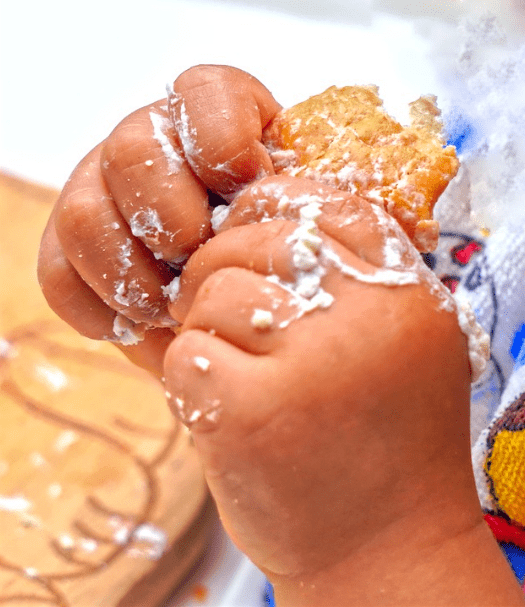What comes first in your mind when your pediatrician says that you can already start feeding your baby with solids? Soft mushy cereals? Pureed foods? I bet you can see yourself doing that famous airplane game to feed your baby and a lot of coaxing for your baby to open his little mouth and eat. But, there is another approach to let your infant eat some solids, not in the form of purées. This method will allow your baby to pick up and eat the finger foods by himself. This approach is called baby-led weaning. And surprisingly, a lot of parents are practicing this approach! So, what is baby-led weaning?
BABY-LED WEANING
This method is popular in the United Kingdom. Gill Rapley, a former public health nurse in the country, coined this term. Baby-led weaning is a feeding approach wherein infants practice feeding themselves solid foods right from the start. Parents introduce this method to babies who are six months and above. In baby-led weaning, you avoid feeding your baby purées and mushy food and feed them solid foods, like fruits. It will allow them to learn and familiarize themselves with how to chew and swallow, and it will also teach them to control their food intake. This type of feeding is easy, so you will not find it hard to incorporate it into your baby’s eating habits.
WHEN SHOULD YOU START BABY-LED WEANING?
According to pediatricians, a baby can start with baby-led weaning when:
- They weigh two times bigger than their birth weight.
- They start being interested in food (they watch you eat or reach for the food you are eating)
- The baby can hold his head up and can sit up without your support.
- When he can move the food that you feed him around his mouth instead of spitting it out.
TIPS WHEN STARTING BABY-LED WEANING
Before introducing your infant to baby-led weaning, you must do these steps:
- Ensure that your baby is qualified to do the feeding method by checking if he passes the milestones stated above.
- Prepare your baby’s highchair. Ensure that the straps and footrest are perfect for your baby’s size.
- Pick one solid food to start your baby-led weaning. Start by offering your infant one food at a time.
- You should also introduce water when he starts eating solid foods. You can let him drink in a trainer cup.
- Stop feeding the baby if he shows signs of being uninterested. Do not continue the baby-led weaning when he starts fussing, turning his head away from the food, or any signs of uninterest.
- Despite letting them feed themselves, never leave them unattended.
- Do not serve them spicy, hard, sticky, and slippery foods. Offer them soft foods.
- Offer food in small sizes.
- Familiarize your baby with foods that have different textures.
WHAT ARE THE FOODS YOU CAN OFFER YOUR BABY?
You should offer your baby finger-sized foods that are easy to bite. Listed below are some foods that your baby can eat.
- Apple wedges (do not peel the skin off so that your baby can hold them)
- Melon slices
- Mango slices
- Sliced bananas
- Broccoli florets (can be steamed or roasted)
- Chicken meat (with bone so your baby can suck on it)
- Beef (with bone so your baby can suck on it)
- Toasts cut into sticks.
BENEFITS OF BABY-LED WEANING
The baby-led weaning approach has many benefits to your baby. Some benefits include:
- It will help your babies be familiar with foods that have different flavors and textures. That way, they will be more open to a variety of foods. They will not grow as picky-eaters.
- They will develop independence. Since the babies feed themselves, they will learn to eat independently and control their food intake.
- It helps develop their motor skills. Letting your babies eat by themselves can help improve their dexterity and have better coordination in their hands and eyes.
- It can help lessen the risk of obesity. When parents spoon-feed their babies, they tend to eat faster and eat more than they need. But in baby-led weaning, the babies are in control of their food intake. It will help them practice how to self-regulate. They will know how much they should eat based on the level of their hunger. It results in a lower chance of child obesity.
- The baby will have involvement in family meals. Since the baby is sitting with you and eating by himself, he will be more involved in family time. That way, he can spend more time with the family. It will also help him adapt to their eating routines.
- This feeding approach will be more fun for the babies! Babies like holding their food, touching, inspecting, and smelling them. It will help them enjoy eating and exploring different food textures and flavors.

